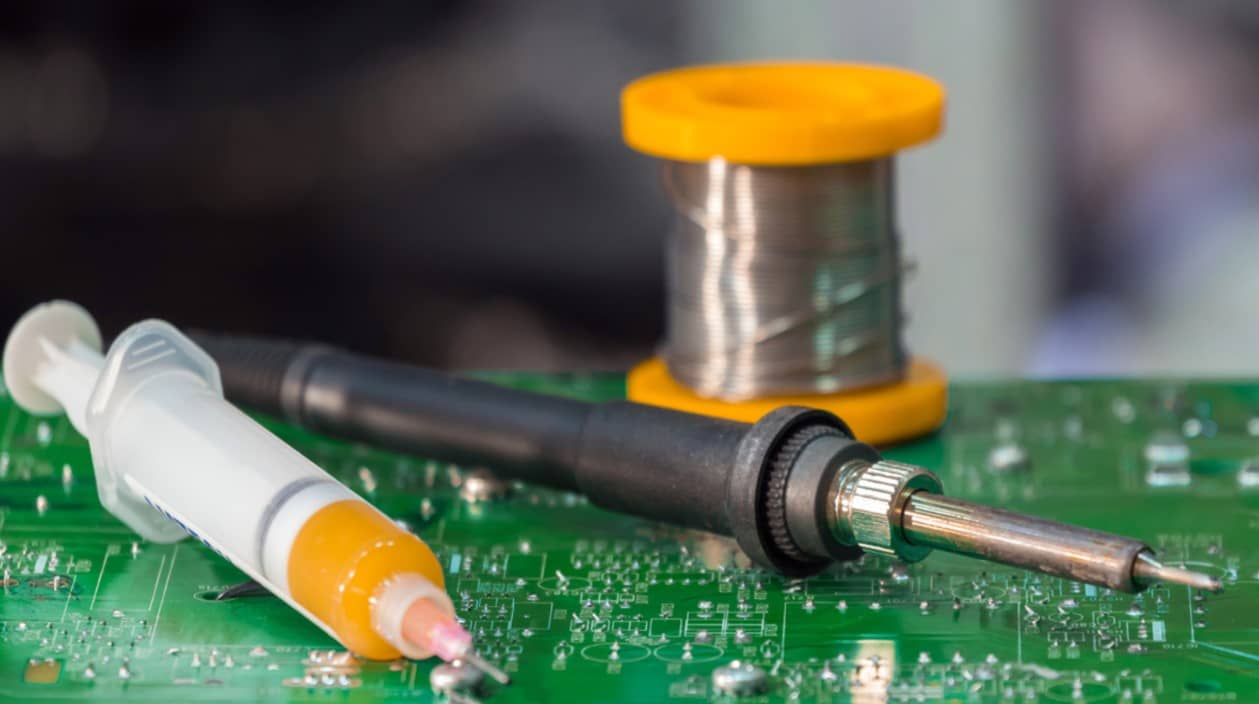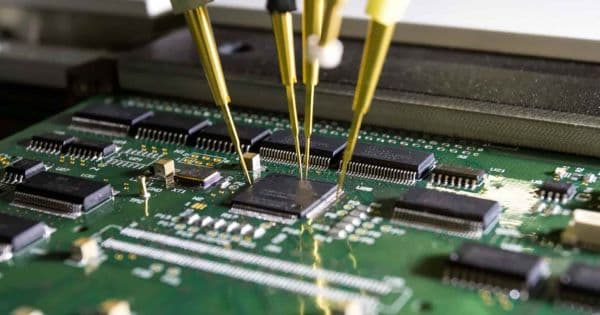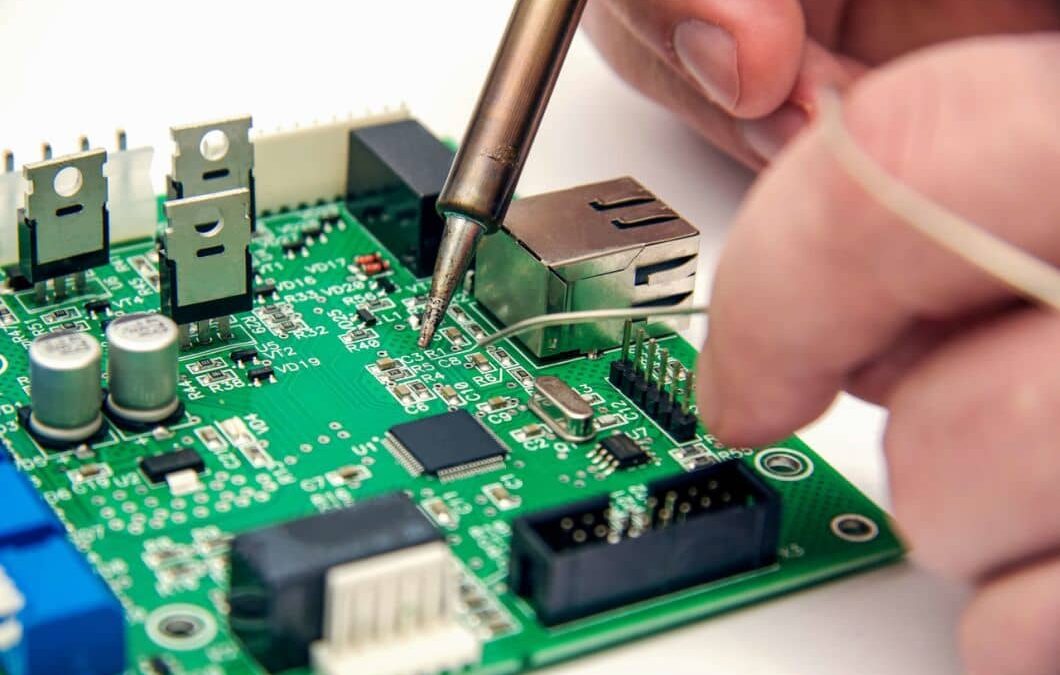Back to blog
Mastering Solder Flux: A Guide for Electronics Enthusiasts

Solder Flux
Solder flux is a critical component in the soldering process, especially in PCB assembly. It helps achieve a true metallurgic bond between two metals, ensuring the solder joint remains intact even under daily wear-and-tear. This article explores the types of fluxes available, their advantages and disadvantages, and options for flux removal.
What is Flux & How Does It Work?
Flux is a chemical compound that prepares metal surfaces for soldering by removing oxides, promoting wetting, and enhancing solder flow. It typically comes in paste, liquid, or core form within solder wire. The active ingredients in flux, such as rosin or organic acids, react with oxides on metal surfaces when heated, preventing them from interfering with the soldering process. Flux also creates a protective barrier on metal surfaces, preventing the re-formation of oxides during soldering.
Importance of Flux in Soldering
Flux is a critical component in the soldering process, especially in electronics manufacturing like PCB assembly. It serves several key functions that are essential for creating strong, reliable solder joints:
- Oxide Removal: Metal surfaces, especially those of copper, quickly oxidize when exposed to air. These oxides can prevent the solder from properly bonding with the metal, leading to weak joints. Flux removes these oxides, ensuring a clean surface for soldering.
- Wetting: Solder has a natural tendency to bead up on metal surfaces, a phenomenon known as poor wetting. Flux helps improve wetting by reducing the surface tension of the solder, allowing it to spread more evenly and form a strong bond with the metal.
- Solder Flow: Flux promotes uniform solder flow by preventing the solder from balling up or forming irregular shapes. This ensures that the solder flows smoothly and evenly, creating a solid connection between the components.
- Prevention of Oxide Reformation: Flux creates a protective barrier on the metal surfaces, preventing oxides from reforming during the soldering process. This ensures that the solder joint remains clean and free from contaminants.
Overall, flux is essential for achieving high-quality solder joints that are reliable and durable. Without flux, soldering would be much more challenging and the resulting joints would be weaker and more prone to failure.
Types of Fluxes
Rosin Flux (Type R): Derived from pine tar resin, rosin flux has been used for over a thousand years. It is dissolved in a solvent and distilled to yield clear rosin used in soldering flux. Activators are added to increase its ability to dissolve heavier oxide films. However, rosin flux can leave behind corrosive residues and must be removed from the circuit board after soldering.
No-Clean Flux: No-clean fluxes can contain natural rosin or synthetic resins. They leave less residue compared to rosin fluxes and are designed to be left on the circuit board without cleaning. However, the residues can be tacky and attract dust, requiring removal in some cases.
Water-Soluble Flux: Water-soluble fluxes use water-soluble resins, and their residues should be removed using a water rinse. These fluxes are environmentally friendly and can help reduce VOC emissions.
IPC J Standard Flux Classification
The IPC J Standard (Joint Industry Standard) flux classification system is a standardized method used to categorize fluxes based on their composition and activity level. This classification system helps manufacturers and users understand the characteristics of different flux types and select the most appropriate flux for their soldering applications.
Here is a brief overview of the IPC J Standard flux classifications:
- RO (Rosin): Rosin flux is derived from natural pine tree resin. It is commonly used in soldering applications due to its ability to remove oxides and promote solder wetting. Rosin flux can be further classified based on its activity level (R, RMA, RA).
- OR (Organic): Organic flux contains organic materials other than rosin or resin. These fluxes are known for their ability to remove oxides and provide good soldering performance. Organic fluxes are water-soluble and require cleaning after soldering.
- IN (Inorganic): Inorganic flux is designed for use with stronger metals such as brass, copper, and stainless steel. These fluxes require thorough cleaning after soldering to remove any corrosive residues.
- RE (Resin/Synthetic Resin): Resin or synthetic resin fluxes are made from synthetic materials and are often used in high-temperature soldering applications. These fluxes provide excellent solder wetting and are suitable for a wide range of soldering processes.
Additionally, fluxes are classified based on their activity level, which is rated as L (low), M (medium), or H (high). The activity level indicates the flux’s ability to remove oxides and promote solder wetting. Low-activity fluxes are typically used for less demanding soldering applications, while high-activity fluxes are used for more challenging soldering tasks.
Flux Formats & Packaging Options
Flux is crucial in soldering as it aids in removing oxide films that form on metal surfaces, promoting the wetting ability of the solder, and ensuring uniform solder flow without balling-up (dewetting). This is essential for creating strong and reliable solder joints, especially in electronic components where proper soldering is critical for functionality and durability.
The IPC J Standard (Joint Industry Standard) flux classification system categorizes fluxes based on their composition and activity level. Fluxes are classified as RO (rosin), OR (organic), IN (inorganic), and RE (resin/synthetic resin), with activity levels rated as L (low), M (medium), or H (high). Understanding these classifications helps in selecting the right flux for specific soldering applications, ensuring optimal results.
Flux is available in various formats, including liquid flux, tacky flux, flux core, and flux in solder paste. Each format has its advantages and is suitable for different soldering applications. The choice of flux format depends on factors such as the type of soldering, joint accessibility, and specific soldering process requirements. Understanding these formats allows for the proper application of flux, leading to better soldering results.
Conclusion
Flux is an essential component in electronic soldering, helping to remove oxides, promote wetting, enhance solder flow, and prevent re-oxidation. By using the appropriate flux for the specific soldering task, strong and reliable solder joints can be achieved, ensuring optimal electrical and mechanical connections. Understanding the different types of flux, their classifications, and the various formats and packaging options available is crucial for selecting the right flux for each soldering application. This knowledge helps to ensure that electronic components are effectively joined together, leading to reliable and long-lasting electronic devices.
PCB & PCBA quick quote
Related Articles

Reliable PCBs: The Role of Functional Circuit Testing
Functional Circuit TestingIn the realm of Printed Circuit Board (PCB) manufacturing, ensuring the functionality and reliability of the boards is paramount. Functional Circuit Test (FCT) is a crucial step in this process, serving as the final check before the boards...

Exploring Through-Hole Technology (THT) in PCB Assembly
[pac_divi_table_of_contents title="On this article" default_state="closed" included_headings="off|on|on|off|off|off" exclude_headings_by_class="on" active_link_highlight="on" level_markers_3="icons" title_container_padding="10px|15px|10px|15px|true|false"...

What is a Cold Joint Solder and How Can You Prevent it?
[pac_divi_table_of_contents title="On this article" default_state="closed" included_headings="off|on|on|off|off|off" exclude_headings_by_class="on" active_link_highlight="on" level_markers_3="icons" title_container_padding="10px|15px|10px|15px|true|false"...
Take a Quick Quote
